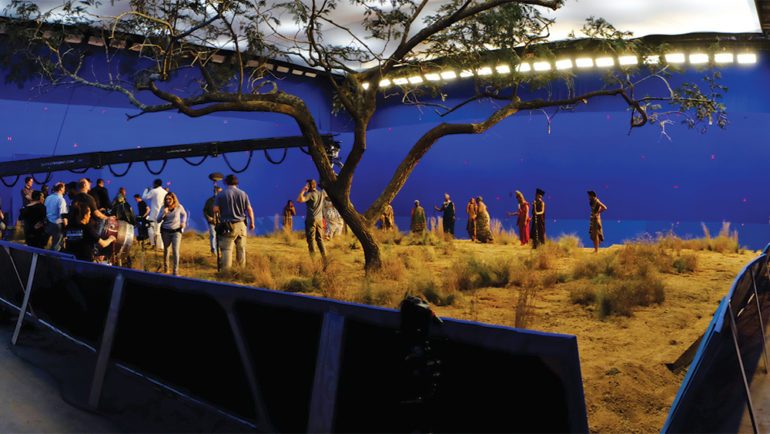Contenders: High-Tech Visual Effects Make Imaginary Worlds Feel Real
By Karen Idelson
LOS ANGELES (Variety.com) – Visual effects have traveled a long road, from defining the look of a generation of sci-fi genius projects such as “2001: A Space Odyssey,” to their subsequent flagrant overuse, to today’s careful integration and design. Take a step back from some of this year’s visual effects front-runners and you’ll discover a leap toward a more seamless art.
Whether it’s the deeply personal take on the moon landing in “First Man”; such superhero tentpoles as “Black Panther,” “Aquaman,” “Venom,” “Avengers: Infinity War” and “Bumblebee”; or action/fantasy films including “Annihilation,” “Ready Player One” and “The Nutcracker and the Four Realms,” these vfx leaders found their way to the head of the pack by making their worlds feel real.
“” gets a lot of its grit and imagery from NASA reference photos, but also from the way vfx supervisor Paul Lambert, an Oscar winner for “Blade Runner 2049,” staged many of the shots. In the past, actors often had to perform against next to nothing and were told to simply imagine the vfx as someone on set described them.
“Ryan [Gosling, playing Neil Armstrong] is reacting to real things, we didn’t just have him stare at a greenscreen and tell him what he was looking at,” says Lambert, who constructed a 35-foot-tall LED screen that could be used to project the digital footage done by the vfx crew. “You can even see the reflection in his eyes and that would have been something that would have been very problematic to try to do later.”
While Lambert was re-creating imagery based on documented NASA photography, the vfx teams for many other pics in the awards race had to bring their vfx and live-action footage together in a way that made the unreal look unquestionably real.
“” vfx supervisor Geoffrey Baumann kept the look of the world grounded by heavily incorporating Africa-shot plates, which gave him light and tone information that could be used to pull everything together. Baumann also worked closely with production design and cinematography so the overall appearance of the film fell together.
“I think that’s what we’re all trying to do, make the world look real and so that nothing takes the audience out of the story or away from the characters,” Baumann says. “So you need to be working with all the departments and communicating.”
“Aquaman,” “Venom” and “Bumblebee” also rely on integrating superheroes against photo-real environments and somehow let us come away with the feeling that it all makes sense. But “Ready Player One,” set in 2045 in a deteriorated world in which people escape into a VR landscape to avoid their real lives, straddles two realms, one of which is entirely effects-made but still relies on the characters and the actors’ performances to keep the audience in the story.
Sometimes the character, the actor and the effect become one. “” also used photo-real plates from Iceland and incorporated a kind of virtual reality/machine learning tech to create Josh Brolin’s character Thanos.
There was a time when merging the performance of an actor and visual effects in such films as “Rise of the Planet of the Apes” brought up questions about whether the performance of Andy Serkis as the ape Caesar could be considered an acting performance. Nonetheless, these type of visual effects remain one of the most dynamic areas of the art.
“Every visual effects house has its own flavor of this type of tool now and you’re able to train it by giving it lots of information,” says vfx supervisor Dan DeLeeuw. “With the character Thanos we gave it lots of footage of Josh Brolin moving and then, based on how his face is moving, it remembers what his face does and then makes guesses at what it should be doing as Thanos. When it gets it wrong, you correct it and then it learns from that.”
Looking over the past two decades of vfx work, Visual Effects Society chair Mike Chambers thinks we’ll see even greater strides made by future nominees, but not necessarily because vfx artists will have access to VR or machine learning.
“It’s not the tools that are the limit,” says Chambers. “It’s the imagination.”
(Pictured above: A bluescreen set during the making of “Black Panther”)

